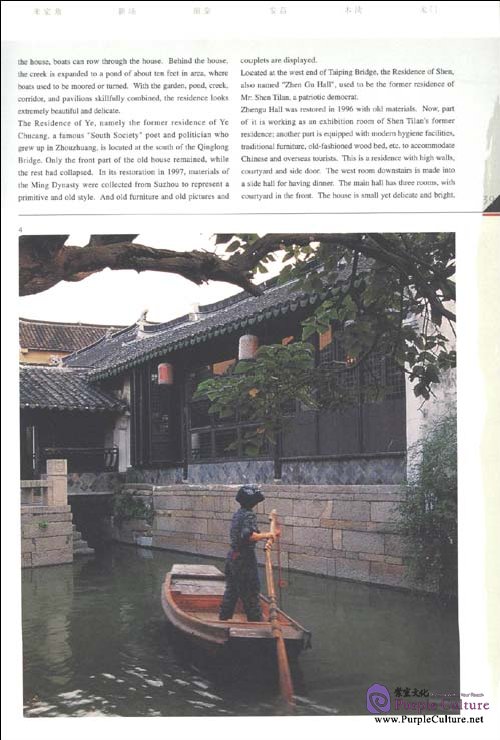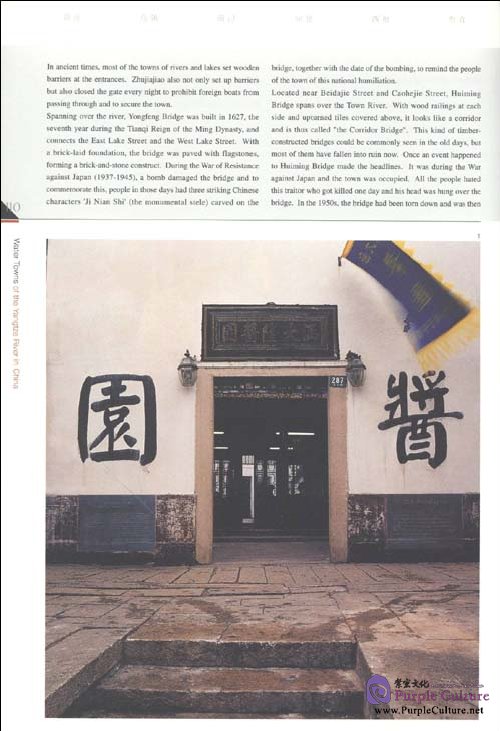Sample Pages Preview


The architecture and layout of the water towns are a perfect combination of the idea ofman-and-heaven unity and the economic factors:the seemingly casual but well-plannedlayouts, simplified shapes, light and friendly colors and soft beautiful lines.To facilitateeconomic exchanges, all houses are built along the rivers or the streets and are SO designedthat they incorporate shopping, residence and production functions.By the patios and thelong windows the inner chambers are connected to the outer halls, Affinity with water isubiquitous——the streets in front, the rivers behind, the waterside houses, the waterwall gates, the bridge ends, the sheltered water verandas, the waterside cabinets, and the water sidepavilions.There are even cases where the water runs through the house, a perfect illustrationthat human beings live harmoniously with the surroundings.
Compared with towns of other parts of China, the water towns here are more subject toeconomic influences in the process of their development and water has become the centralelement in the unique local surroundings and life for obvious geographical reasons.Asculmination of wisdom of forefathers of the people living here, the water towns have beenplaying a positive role in the evolution of towns of China in general.
Since the 1980s, vast changes have taken place in China.Because of the rapid economicgrowth, changes of social and economic map, expansion of modern industry, construction ofhigh buildings and increasing number of roads, the water grids and the traditional houses aredisappearing. Fortunately there are exceptions, among which are Zhouzhuang, Tongli, Luzhi, Jinxi and Mudu of Suzhou, Nanxun of Huzhou, Wuzhen and Xitang of Jiaxing, as well asZhujiajiao and Xinchang of Shanghai.Only in these places far from the modern roads wherethe local governments marked out new…

